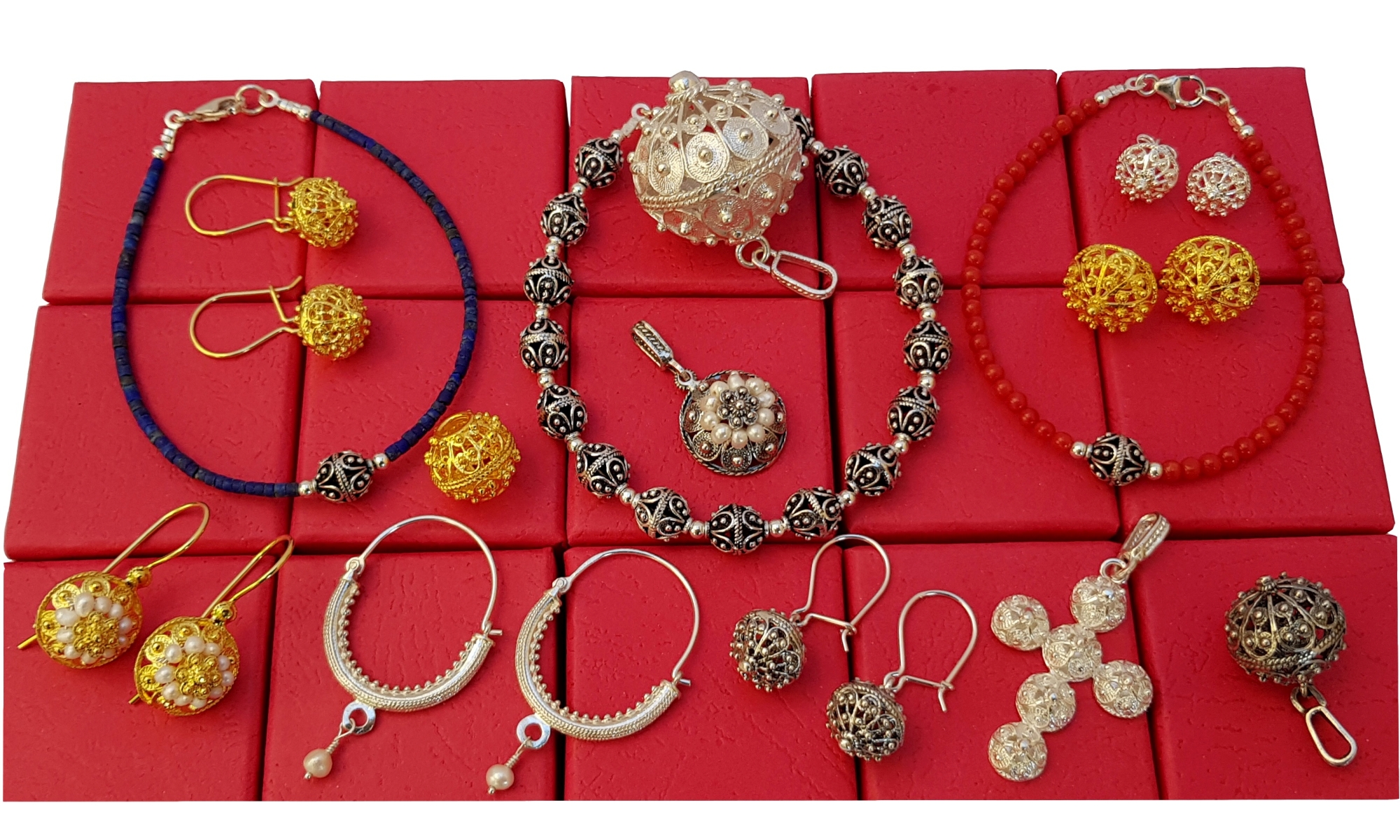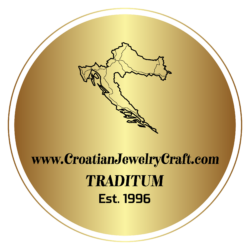Croatian heritage, traditional filigree jewelry:
In my first blog, I am going to write a short story about Croatian filigree jewelry.
Meticulously handcrafted by skilled goldsmiths, old-original pieces of this jewelry were inherited from generation to generation, and today they are kept at the museums as a part of Croatian folk heritage.
“Dubrovnik Goldsmiths” – Book written by the Ivo Lentic ( famous Croatian historian ), contains photos of 19th century filigree jewelry, exhibited at the Dubrovnik Rector’s Palace.
Traditional filigree jewelry was spread across the Dalmatia region.
Made in a couple of different filigree patterns and incorporated into various jewelry items such as the earrings, pendants, necklaces, rings…
Today, this jewelry is made in authentic, traditional styles, as well as by incorporating traditional elements into current, modern jewelry trends.
Two most common forms are filigree ball (Botuni) jewelry and filigree hoop (Konavle) earrings.
In recent time, Konavle earrings gained media exposure from being worn by Queen Rania and Croatian president.
“Botuni” jewelry:
The name botun refers to round or circular buttons, which adorned various male folk costumes. It was declared as the most original Croatian souvenir in 2007 by the Croatian National Tourist Board.
Typical for Dalmatia region, they consist of two half-spheres made in filigree technique, which are connected through the middle. Made in a couple of different filigree patterns, from silver or gold material.
Konavle filigree hoop earrings ( “Verižice” ):
Oblong-shaped earrings with hollow filigree-decorated frame made from silver or gold. Adorned with small beads of either Mediterranean coral or freshwater pearl, suspended from the bottom of the earrings.
As part of the traditional women’s Konavle folk costumes, they were made by skilled goldsmith masters.
Traditionally, these earrings were the gift that the young men would present to his fiancée at the wedding:
Small verižice while proposing, and then the large ones during the church wedding ceremony.
So it was considered as a rule that the small ones were worn by unmarried women, while those married wore large ones.

